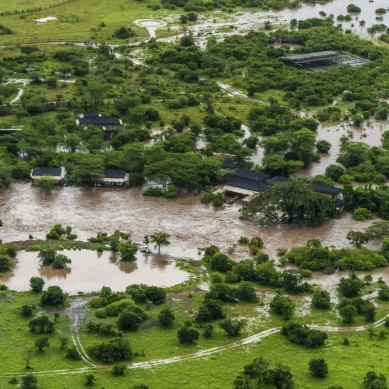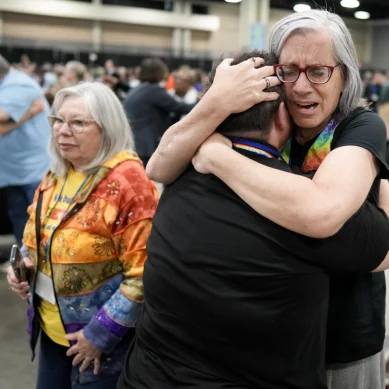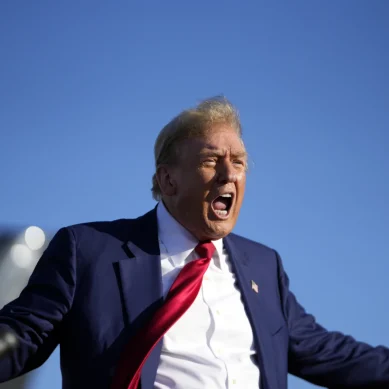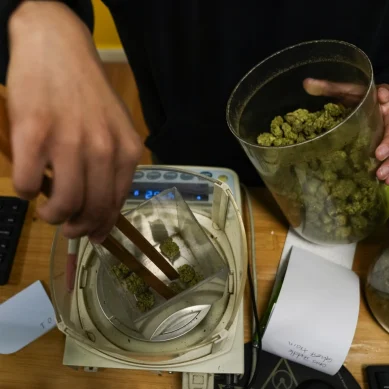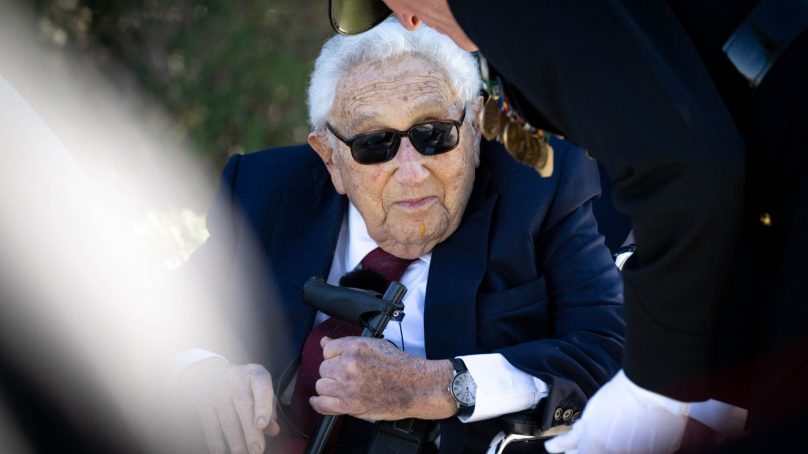
Ny Sarim had lived through it all. Violence. Loss. Privation. Genocide.
Her first husband was killed after Pol Pot’s murderous Khmer Rouge plunged Cambodia into a nightmare campaign of overwork, hunger and murder that killed around two million people from 1975 to 1979. Four other family members died too — some of starvation, others by execution.
“No one ever even had time to laugh. Life was so sad and hopeless,” she told The Intercept. It was enough suffering for a lifetime, but it couldn’t erase the memory of the night in August 1973 when her town became a charnel house.
Ny was sleeping at home when the bombs started dropping on Neak Luong, 30 tonens all at once. She had felt the ground tremble from nearby bombings in the past, but this strike by a massive B-52 Stratofortress aircraft hit the town squarely. “Not only did my house shake, but the earth shook,” she told The Intercept. “Those bombs were from the B-52s.”
Many in the downtown market area where she worked during the day were killed or wounded. “Three of my relatives — an uncle and two nephews — were killed by the B-52 bombing,” she said.
The strike on Neak Luong may have killed more Cambodians than any bombing of the American war, but it was only a small part of a devastating yearslong air campaign in that country. As Elizabeth Becker, who covered the conflict as a correspondent for The Washington Post, notes in her book When the War Was Over, the United States dropped more than 257,000 tonnes of explosives on the Cambodian countryside in 1973, about half the total dropped on Japan during all of World War II.
“They caused the largest number of civilian casualties because they were bombing so massively with very poor maps and spotty intelligence.”
“The biggest mistakes were in 1973,” she told The Intercept. “They caused the largest number of civilian casualties because they were bombing so massively with very poor maps and spotty intelligence. During those months ‘precision bombing’ was an oxymoron.” Neak Luong, she concurred, was the worst American “mistake.”
State Department documents, declassified in 2005 but largely ignored, show that the death toll at Neak Luong may have been far worse than was publicly reported at the time, and that the real toll was purposefully withheld by the US government.
In his 2003 book Ending the Vietnam War, Henry Kissinger wrote that “more than a hundred civilians were killed” in the town. But US records of “solatium” payments — money given to survivors as an expression of regret — indicate that more than 270 Cambodians were killed and hundreds more were wounded in Neak Luong. State Department documents also show that the US paid only about half the sum promised to survivors.
The death warrant for Neak Luong was signed when US officials decided that American lives mattered more than Cambodian ones. Until 1967, US forces in South Vietnam used ground beacons that emitted high frequency radio waves to direct airstrikes. But the US stopped using the beacons after a radar navigator on a B-52 bomber failed to flip an offset switch, causing a bomb load to drop directly on a helicopter carrying a beacon instead of a nearby site designated for attack.
The chopper was blown out of the sky, and the US military switched to a more reliable radar system until the January 1973 ceasefire formally ended the US war in Vietnam.
At that point, the more sophisticated radar equipment went home, and the less reliable ground beacons came into use in Cambodia, where the US air war raged with growing intensity.
In April 1973, according to a formerly classified US military history, American officials expressed concern that “radar beacons were located on the American Embassy in Phnom Penh” and raised “the possibility that weapons could be released in the direct mode,” striking the US mission by accident.
Within days, that beacon was removed. But while Americans at the embassy were safe, Cambodians in places like Neak Luong, where a beacon had been placed on a pole in the centre of town, remained at risk. “It should have been put a mile or so away in the boondocks,” a senior US Air Force officer told the New York Times in 1973.
On August 7, 1973, a secret cable shot from the beacon-less US Embassy in Phnom Penh to the secretaries of State and Defence and other top American officials in Washington. At approximately 4:35am in Cambodia, according to Deputy Chief of Mission Thomas Enders’s message, Neak Luong was “accidentally bombed by a yet undetermined [US Air Force] aircraft.”
Ny said that her cousin, who served with the US-allied Cambodian army and spoke English, got on the radio shortly after the bombing and asked an American what had happened. He was told him that the bombs were dropped in error, she said.
It later became clear that a navigator had again failed to flip the offset bombing switch.
“No Great Disaster”
Col David Opfer, the US Embassy’s air attaché, quickly flew to the town to survey the situation, he told The Intercept. “I remember that some of the injured people were very happy to see somebody arrive, and I sent some of the most seriously wounded people back to the hospital in Phnom Penh in my helicopter,” he said. (Opfer died in 2018.)
Opfer told the foreign press corps in Phnom Penh that the bombing was “no great disaster.”
“The destruction was minimal,” he announced at a press briefing, even though Enders, in the secret cable, had already informed U.S. officials that damage was “considerable.”
In a November 2010 interview, Opfer reiterated that he didn’t consider the damage to Neak Luong significant, and that it was limited to a small area. “It was a mistake,” he explained. “It happens in war.”
- The Intercept report
